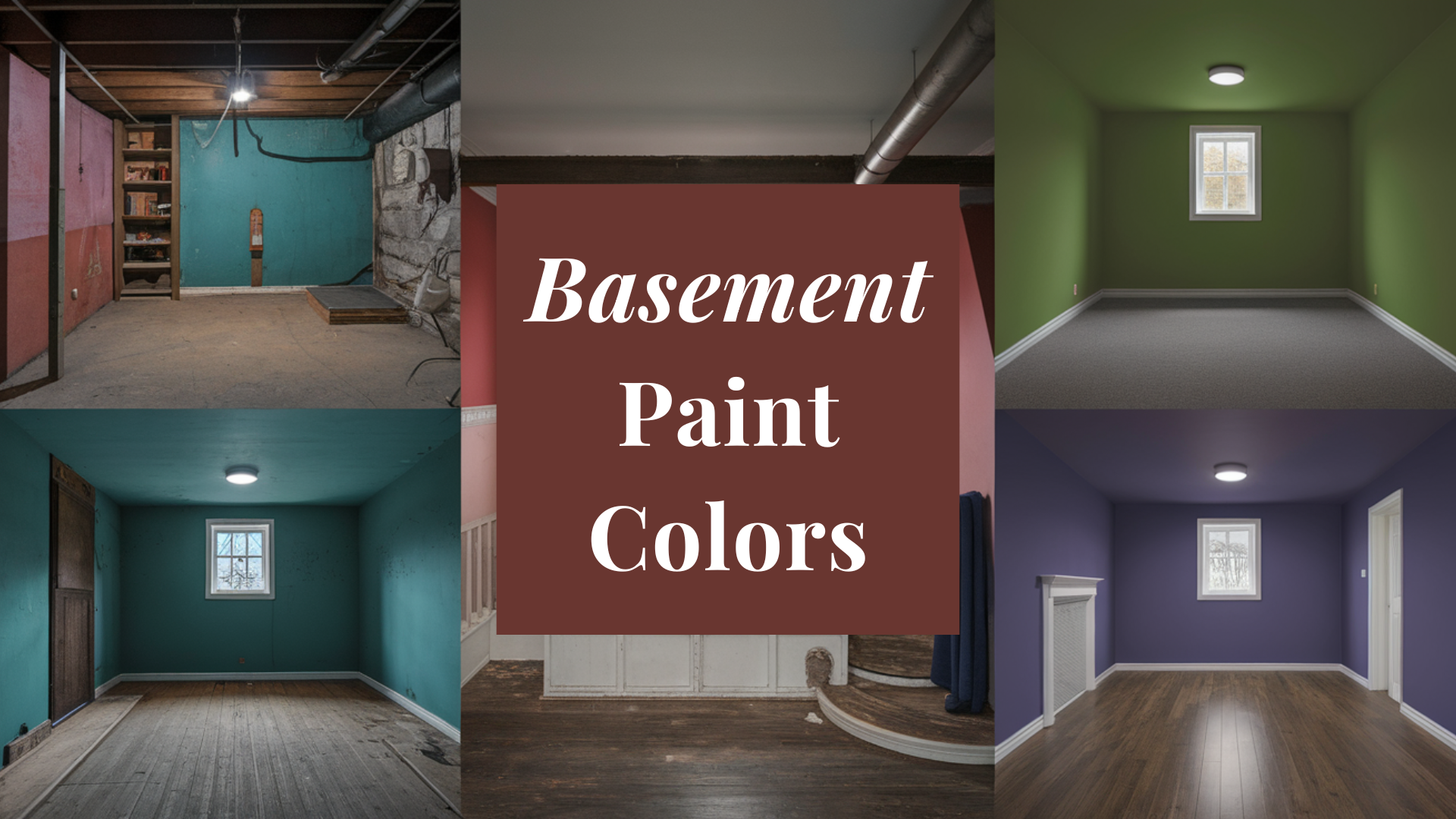Picking the right paint color for your basement can make a big difference. Since basements often don’t get much natural light, you want colors that help the space feel bright, open, and comfortable.
Whether your basement is a playroom, home office, or cozy hangout spot, the right paint can change the whole mood. In this blog, I’ll walk you through the best basement paint colors that actually work.
I’ll cover light and neutral shades, warm and cozy tones, and even a few bold colors for those who want something fun. I’ll also share some easy tips on how to pick the perfect color for your space. Let’s get started and turn your basement into a space you’ll love to spend time in!
How Basement Lighting Affects Paint Colors
Most basements don’t get a lot of natural light, and that can change how paint colors look. A color that seems bright upstairs might look darker in the basement. That’s why it’s important to think about lighting before you pick a paint color.
If your basement has small windows or no windows at all, go for light colors. Soft whites, light grays, and pastels can help brighten things up. If you have good lighting, like lots of lamps or ceiling lights, you have more options. Just make sure to test the color first. Try a sample on the wall and see how it looks during the day and at night.
Lighting plays a big part in how your basement feels, so keep that in mind while you choose your paint.
Best Basement Paint Colors to Try
The paint color you choose for your basement can make a huge difference in how it looks and feels. Since basements often have little or no natural light, the right color can help make the space brighter, warmer, and more welcoming. Whether you want a cozy retreat or a light and airy hangout space, these color styles can help you achieve your goal.
1. Soft White

Soft white paint is one of the best options for basements. It reflects light well, which helps brighten dark rooms with little sunlight. It also makes the space feel bigger and cleaner. This color is perfect if you want a fresh, airy feel throughout your basement. It pairs well with just about any flooring or furniture.
2. Light Beige
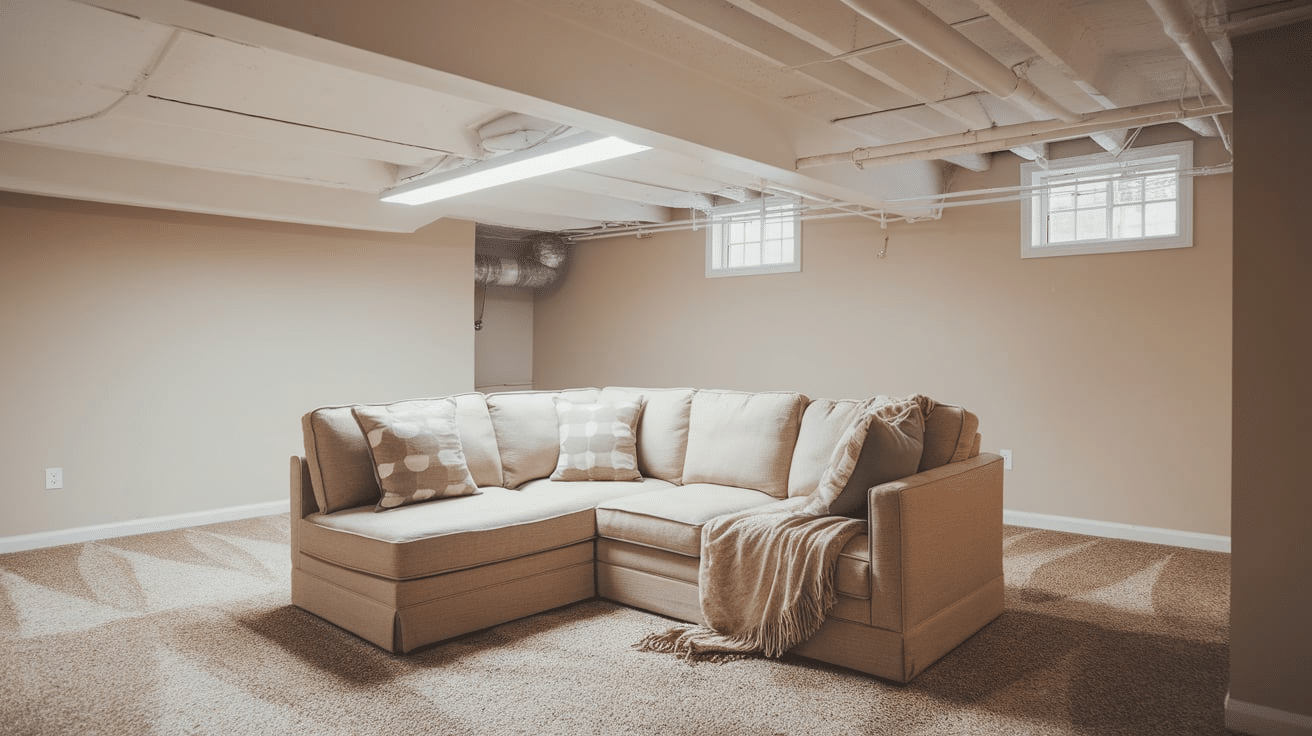
Light beige adds warmth without making the room feel heavy or closed in. It’s a cozy, inviting color that works well in basements used as guest rooms, playrooms, or family spaces. It also blends nicely with natural wood, tan furniture, or earth tones. Light beige is simple, safe, and always looks clean.
3. Pale Gray

Pale gray is a soft, cool color that gives your basement a calm, modern look. It’s great for multipurpose spaces like home gyms, craft rooms, or work areas. This color makes a room feel relaxed but still bright. It’s also very easy to match with black, white, or natural wood accents.
4. Greige (Gray + Beige)
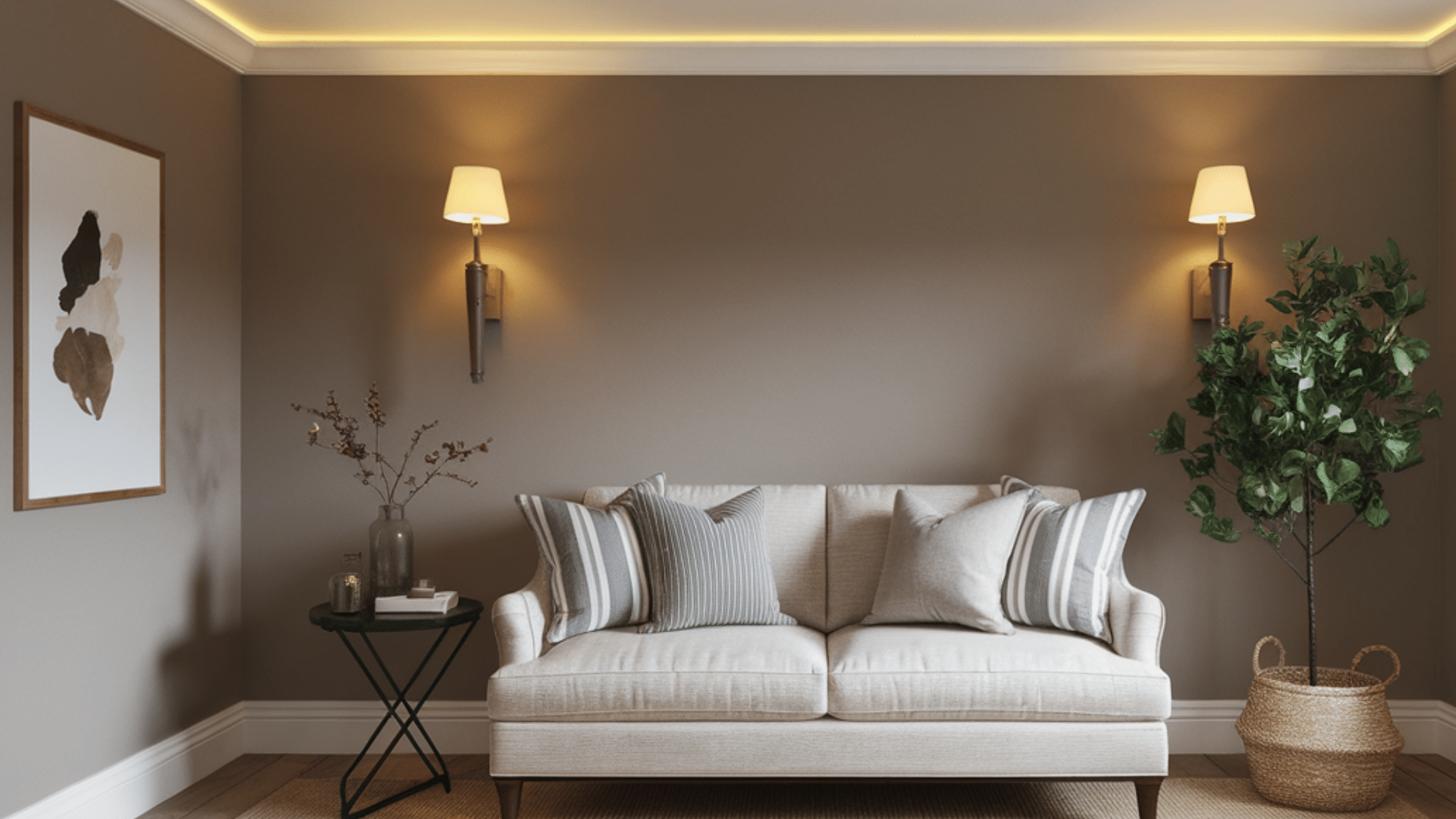
Greige is a mix of gray and beige that gives you the best of both worlds. It’s warm and soft like beige but has the clean, modern look of gray. This color is super flexible and works in just about any basement setup. It’s great for large open areas or basements with different zones, like a TV spot and a reading nook.
5. Warm Taupe

Warm taupe is a cozy, rich neutral that adds depth without feeling too dark. It’s perfect for basements that are used as lounges, man caves, or media rooms. Taupe creates a soft, lived-in feel and looks great with leather, rustic wood, or gold accents. It’s an easy way to add warmth to a cool space.
6. Cool Blue-Gray
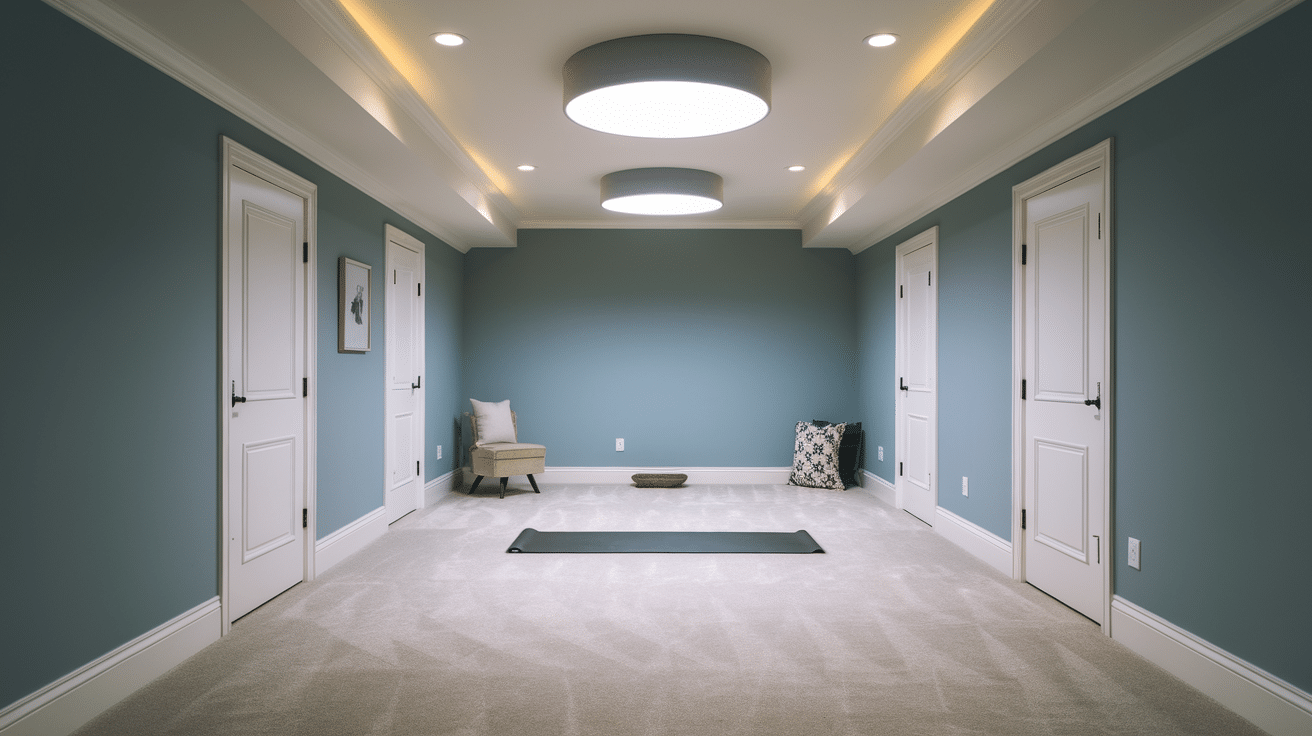
A cool blue-gray is perfect if you want a peaceful, calming vibe. It works well in basements used for yoga, quiet reading, or as a bedroom. This color helps make small spaces feel open and soothing. Pair it with soft lighting and light-colored furniture for the best effect.
7. Creamy Off-White
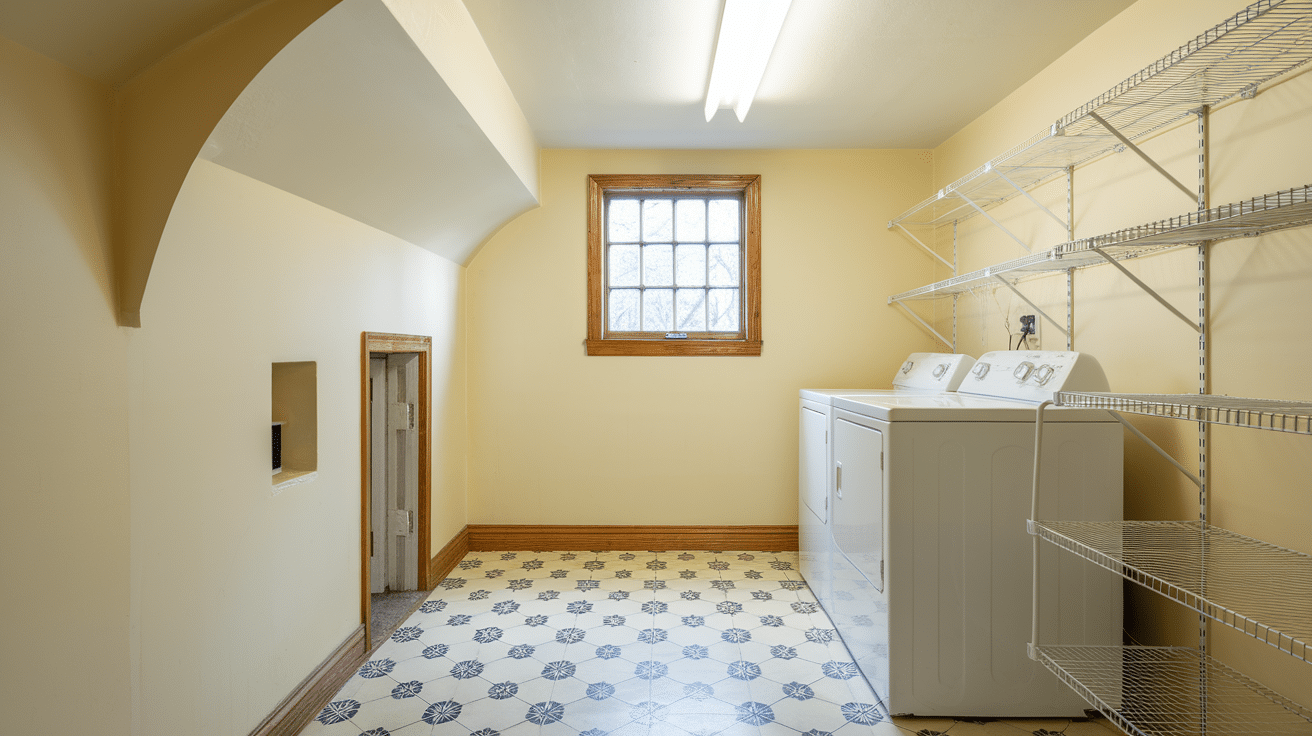
Creamy off-white is warmer than plain white, which makes it feel soft and cozy. It’s ideal for dark basements where you still want a bright and clean look. It brings a little warmth to the space without feeling yellow or dingy. Great for basements with mixed uses like laundry, crafting, or storage.
8. Soft Sage Green
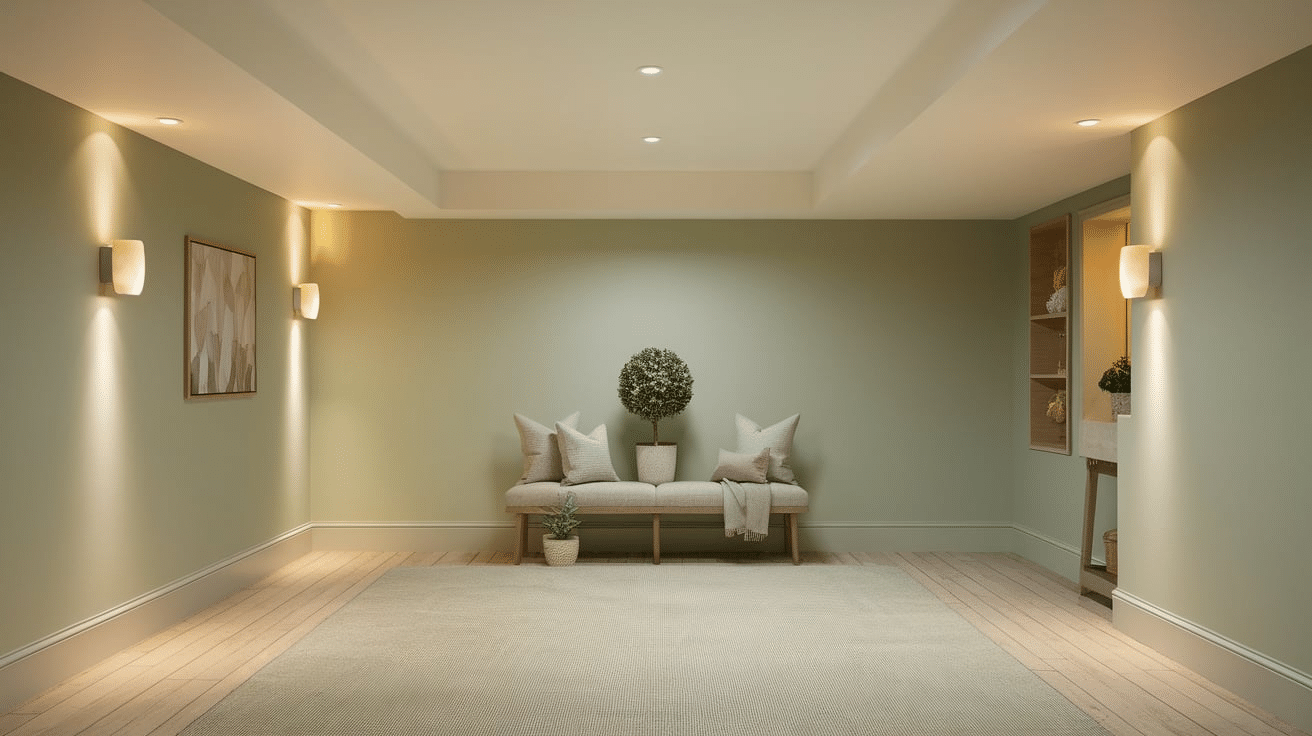
Soft sage green gives your basement a light, natural touch. It works great for creating a calming and fresh space. This color is perfect for basements with plants, wooden furniture, or earthy decor. Sage green is especially nice if you want something unique but still subtle.
9. Deep Charcoal

Charcoal gray adds a bold, dramatic feel without being as harsh as black. It’s great for feature walls or cozy rooms like home theaters or game rooms. This color works well when you add lighter furniture and lots of lighting. It brings in style and comfort at the same time.
10. Warm Terracotta

Warm terracotta is a soft, earthy orange tone that adds character and coziness. It’s great for basements that feel a little too plain or cold. This color adds depth and makes the space feel more lively and unique. Try it with woven textures or rustic wood for a warm, homey feel.
11. Soft Lavender Gray

Soft lavender gray adds a gentle pop of color without being too bold. It works great in basement bedrooms, hobby rooms, or any space where you want a calm and slightly playful vibe. The lavender tint gives it warmth and charm, while the gray keeps it neutral and grounding. It pairs nicely with whites, creams, and brushed metals.
12. Dusty Rose

Dusty rose is a muted pink with gray undertones that feels soft and cozy. It’s a great choice for basements you want to turn into creative spaces, guest rooms, or even stylish lounges. It adds warmth and personality without feeling too bright. Dusty rose also works well with gold accents or natural wood furniture.
13. Soft Blue

Soft blue is a clean, classic color that makes any space feel relaxing and refreshing. It’s a great pick for basements that double as laundry rooms, offices, or kids’ spaces. This color adds lightness and calm and works well with white trim or gray flooring. It’s an easy way to bring in color while keeping things chill.
14. Light Mocha

Light mocha is a gentle brown with warm tones, perfect for cozying up a basement living room or movie space. It adds depth and comfort without making the space feel dark. Mocha pairs beautifully with cream or beige trim, and it gives off a natural, homey feel that’s perfect for relaxing.
15. Rich Olive Green
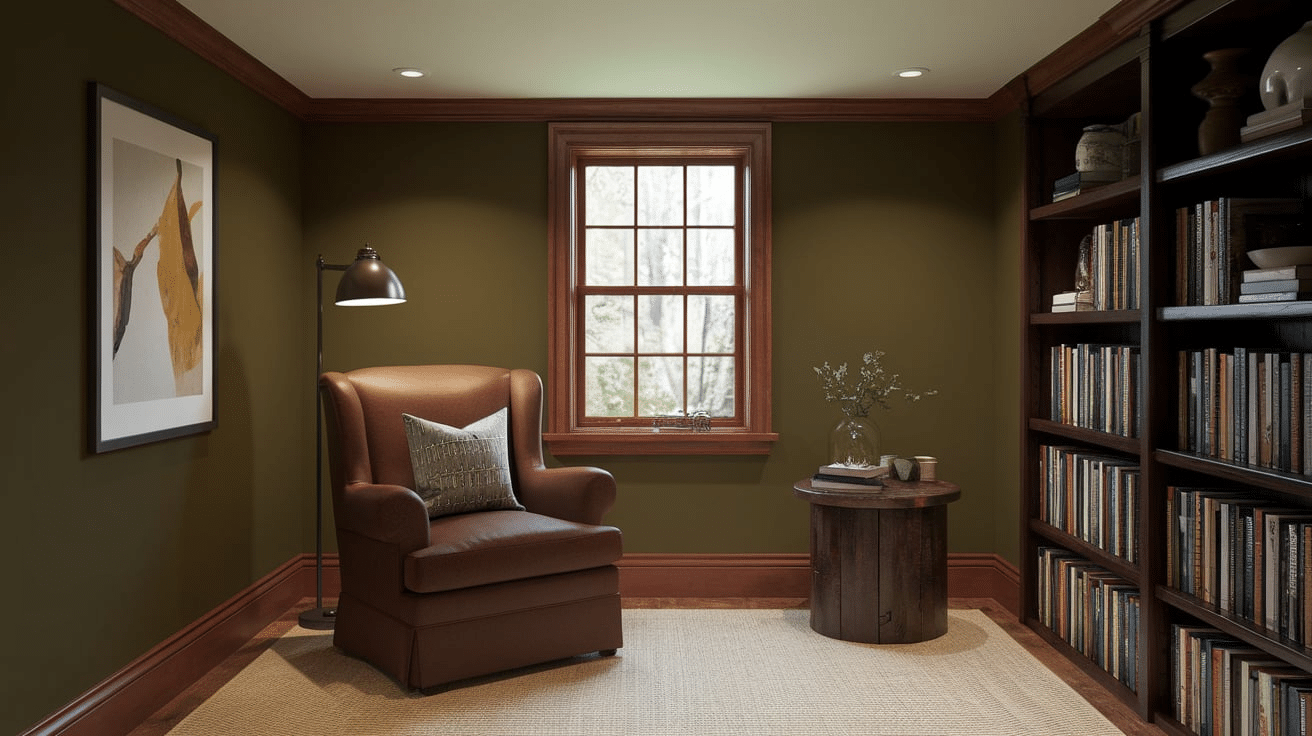
Rich olive green adds a natural, grounded feel to your basement. It’s a bold but cozy color that looks amazing in dens, libraries, or moody sitting areas. Pair it with warm lighting and dark wood for a sophisticated, inviting vibe. It’s perfect for creating a cozy escape.
No matter your basement’s size or purpose, the right paint color can completely transform it. From bright whites to cozy earth tones, there’s something for every style. Pick a color that feels right to you, and enjoy creating a space you’ll love to use.
Choosing Paint Color for Your Basement
Picking a paint color for your basement doesn’t have to be hard. With a little planning, you can find a color that fits your space, style, and lighting. Things to think about before you choose a color:
1. Look at the lighting: Basements usually lack natural light. Light colors like soft white or pale gray can help brighten up the space.
2. Think about what you use the basement for: Is it a playroom, office, or home theater? Light colors work well for open, active areas, while darker colors can make cozy spaces feel even warmer.
3. Try samples on the wall: Paint can look different in a basement. Always test a few colors on the wall and check them in different lights (day and night).
4. Match your furniture and floors: If you already have furniture or flooring, make sure your wall color goes well with them. Neutrals like beige, gray, or greige are safe and stylish.
5. Decide the mood you want: Cool colors (like blue or gray) feel calm and clean. Warm colors (like tan or soft yellow) make the space feel cozy and welcoming.
Choosing a basement paint color is all about how you want the space to feel. Keep it simple. Stick with colors that brighten the room and match your needs. Don’t forget to test a few samples before you decide. A little prep goes a long way in making your basement a space you actually want to spend time in!
Tips for Painting Your Basement
Painting your basement is a great way to freshen it up and make it feel more like the rest of your home. But because basements are different from other rooms, there are a few things to keep in mind. These simple tips will help you get the best results.
1. Clean the walls first: Make sure the walls are clean and dry before you start painting. Wipe off any dust, dirt, or cobwebs so the paint adheres better.
2. Check for moisture: Basements can sometimes be damp. Fix any leaks or water problems before painting, or the paint won’t last long.
3. Use the right primer: A good primer helps the paint go on smoothly and cover better. If your basement has concrete or block walls, choose a primer made for masonry.
4. Pick the right paint finish: Satin or eggshell finishes are a good choice for basement walls. They reflect light just enough to brighten the space, and they’re easier to clean than flat paint.
5. Use light colors to brighten the room: Basements don’t get much natural light, so choose light or neutral colors to make the space feel bigger and more open.
6. Add plenty of lighting: Even the best paint color can look dull without good lighting. Add lamps, ceiling lights, or wall sconces to help the paint shine.
7. Try a bold accent wall: If you want a pop of color, paint one wall a darker or fun shade. It adds style without making the room feel too dark.
9. Use painter’s tape and drop cloths: Painter’s tape and cloths protect your trim, floors, and furniture. This helps keep your lines neat and your space clean.
Painting your basement doesn’t have to be tricky. With the right prep and a few smart choices, you can turn a dark, plain space into something warm and welcoming. Take your time, plan your colors, and enjoy the new look of your basement!
Conclusion
Painting your basement is one of the easiest ways to make it feel like part of your home. The right color can make a dark space feel bright, cozy, and inviting. Whether you’re going for a clean, light look or a bold, dramatic vibe, there’s a paint color that will work for you.
Remember to test a few colors on your walls before painting the whole space. What looks good on a sample card might look different in your basement. And take your time prepping—clean walls, a good primer, and the right tools make a big difference.
With just a few simple steps, your basement can go from cold and plain to warm and stylish. So grab your paintbrush and have fun creating a space you’ll love!

